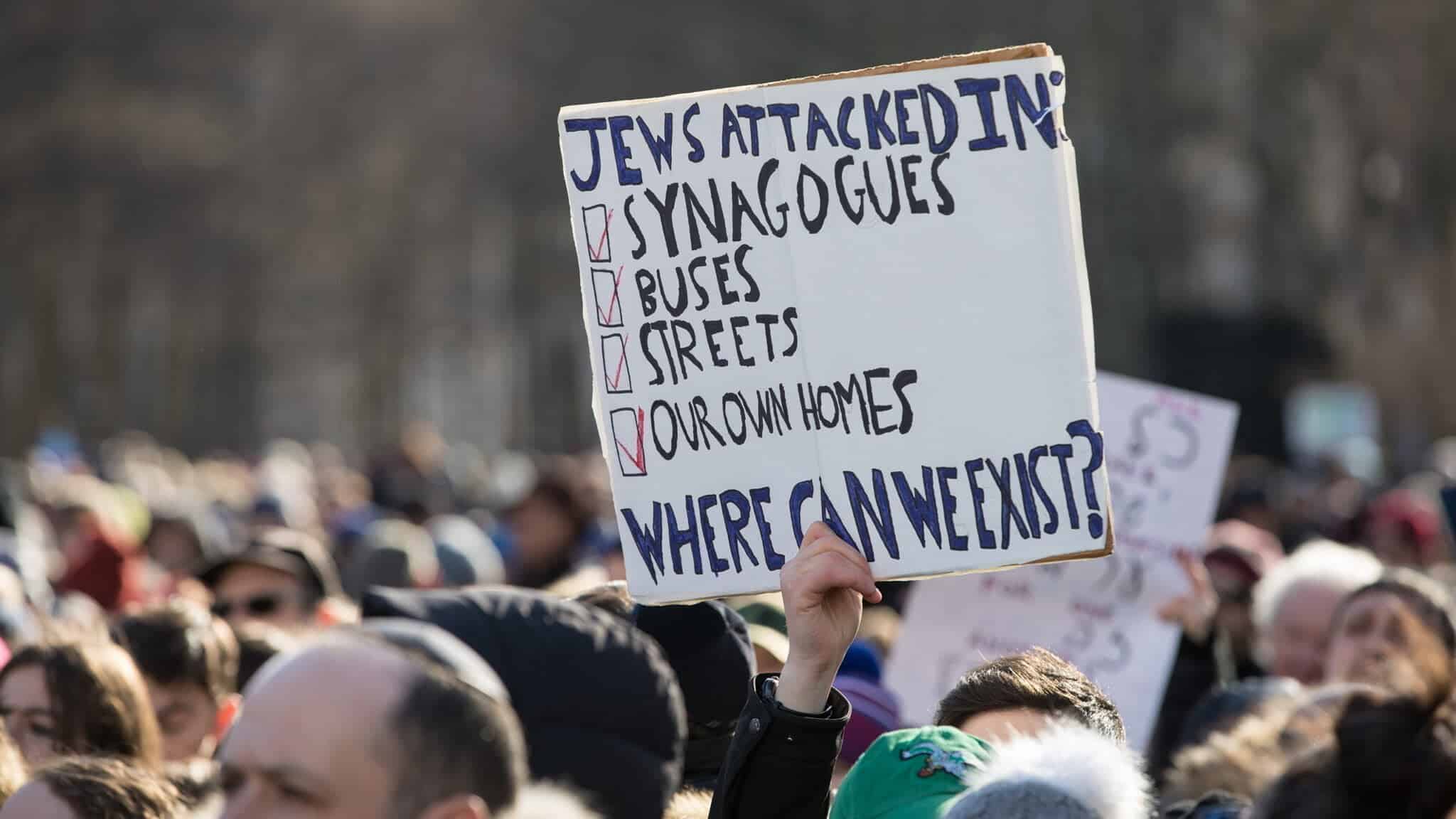When the Biden administration released the first-ever U.S. National Strategy to Counter Antisemitism last month, one might have asked, why the Jews?
Readers may think that Jews are the last people in America that need protection. The Jewish community is well integrated into American society, and, for the most part, doing well, educationally, economically, and politically. A survey conducted by Pew Research Center in 2019 found that Jews were the most admired religious group in America, and the more people got to know Judaism the more they liked Jews!
READ: All Communities Must Speak Out Against Antisemitism
Yet, there are some alarming statistics. While Jews make up only about 2.4 percent of the U.S. population, they are victims of 63 percent of reported religiously motivated hate crimes according to a 2021 FBI report. In addition, the Jewish community has experienced some devastating attacks in recent years. The 2018 attack on Pittsburgh’s Tree of Life Congregation, the deadliest against Jews in our nation’s history, took the lives of 11 worshippers. This massacre has left a deep scar on the Jewish community’s psyche, which has yet to heal, especially as it was followed by other violent assaults on synagogues.
There is antisemitism on both the left and the right. That said, the Anti-Defamation League has concluded that white supremacists are the biggest threat to Jews. The organization counted at least 852 incidents of white supremacist propaganda in 2022, more than double from the previous year. President Biden has always taken antisemitism very seriously. In fact, it was the 2017 march of Neo-Nazis and other white supremacists in Charlottesville that convinced him to run for the presidency in 2020.
That right-wing antisemitism is a bigger problem was reinforced by a recent study conducted by Tufts University Professor Eitan Hersh and Harvard University’s Laura Royden and published in the journal Political Research Quarterly. Not only were antisemitic attitudes more prevalent among political conservatives, surprisingly, it was more common among young conservatives. Surprising because other forms of prejudice, e.g., racism, sexism, anti-gay attitudes, were found to be much higher among older people than young people.
The Strategy
The Biden administration’s fact sheet describes it as “a whole-of-society plan that both meets this moment and lays the foundation for reducing antisemitism over time. Informed by input from over 1,000 stakeholders from every sector of American society, it outlines over 100 new actions that executive branch agencies have committed to take to counter antisemitism — all of which will be completed within a year. The strategy also calls on Congress to enact legislation that would help counter antisemitism and urges every sector of society to mobilize against this age-old hatred, including state and local governments, civil society, schools and academic institutions, the tech sector, businesses, and diverse religious communities.”
There are “four pillars” to the plan:
1. Increase awareness and understanding of antisemitism, including its threat to America, and broaden appreciation of Jewish-American heritage;
2. Improve safety and security for Jewish communities;
3. Reverse the normalization of antisemitism and counter antisemitic discrimination;
4. Build cross community solidarity and collective action to counter hate.
Neera Tanden, who replaced Susan Rice as President Biden’s top domestic affairs advisor, has been put in charge of implementing the strategy. Those who want to explore the 60-page plan in detail can use this link.
READ: Antisemitism On Twitter Has More Than Doubled Since Elon Musk Took Over The Platform
There was some controversy, not about what to do to combat antisemitism, but rather over how to define it. Some traditional antisemitic attitudes are easy to identify, and have ancient roots, like believing that Jews are part of an international conspiracy to control the economy, media, and politics. Modern forms of antisemitism involve Israel. Some attitudes, like holding Jews collectively responsible for Israel’s actions or accusing Jews of being more loyal to Israel than to the countries of their citizenship, also are clearly antisemitic.
But there is a gray area.
Jewish establishment organizations, like the ADL, American Jewish Committee, and Conference of Presidents urged the administration to adopt the International Holocaust Remembrance Alliance (IHRA) working definition of antisemitism, which was developed by the European Union as a non-legally binding tool to help member countries with data collection. The IHRA definition also includes as expressions of antisemitism “denying the Jewish people their right to self-determination, e.g., by claiming that the existence of the state of Israel is a racist endeavor” and “applying double standards by requiring of [Israel] a behavior not expected or demanded of any other democratic nation.”
Groups on the left argued that the IHRA definition blurred the line between real antisemitism and strong criticisms of Israel’s policies and actions toward the Palestinians. Instead, they recommended use of another definition, the Nexus Document, that asserts, “even contentious, strident, or harsh criticism of Israel for its policies and actions… is not per se illegitimate or antisemitic.” In addition, Nexus posits that “opposition to Zionism and/or Israel does not necessarily reflect specific anti-Jewish animus” and “paying disproportionate attention to Israel and treating Israel differently than other countries is not prima facie proof of antisemitism.”
In the end, the plan compromised. IHRA was described as the “most prominent” definition, while the administration also “welcomed and appreciated” the Nexus Document and other efforts to define antisemitism.
Bottom line: The success of this initiative depends not only on national action, but also on responses at the state and local levels. I hope Bucks County government bodies and civil society groups, especially the interfaith community, will step up to do their part.







